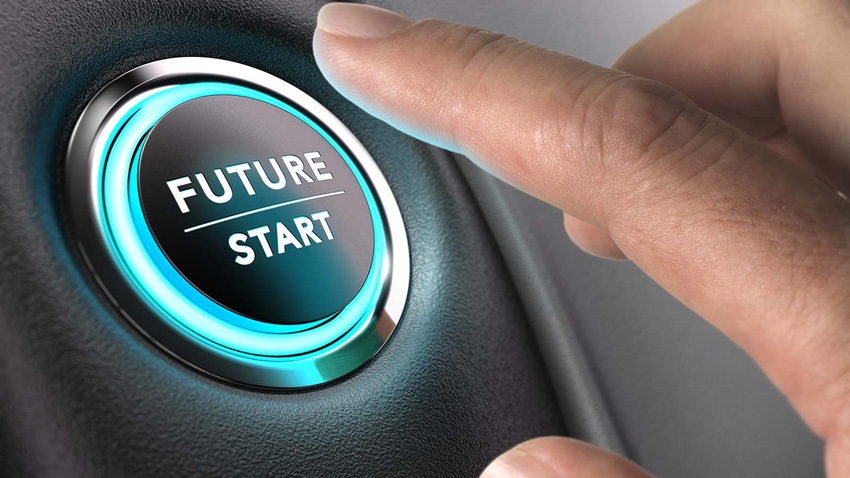Outlook for Electric Mobility on Land, Sea, and Air Detailed in New Report
Electric planes, trains, and automobiles — and so much more — are covered in this comprehensive report from IDTechEx.
November 29, 2023

At a Glance
- More than 13.5 million electric vehicles expected to be sold in 2023
- Pandemic lifted sales of electric boats
- Commercialization timeline for electric vertical take-off and landing aircraft remains sketchy
Electric mobility encompasses a lot, lot more than the semi-ubiquitous electric vehicle, as outlined in a comprehensive report from research firm IDTechEx, “Electric Vehicles: Land, Sea & Air 2024–2044.” The document covers all vehicle volume and drivetrain breakdowns, including battery-electric, fuel cell, and hybrid vehicle unit sales; battery demand (GWh); and market revenue generation (in US$ billion). The report further details emerging technology trends underpinning the transition, from silicon-anode batteries to axial-flux motors and megawatt DC fast-charging.
Electric vehicles dominate, hybrids in decline
Electric cars represent the largest EV market over the forecast period in terms of battery demand and market value. Sales of battery EVs (BEVs) and plug-in hybrid Evs (PHEVs) cars surged again in 2022, reaching 10.5 million units, compared to the 6.5 million the year before. Growth is set to continue in 2023, with IDTechEx predicting more than 13.5 million in 2023. However, the growth of HEVs slowed significantly, and in Europe PHEV sales may decline slightly in 2023, signaling the transition toward full electrification.
Europe briefly overtook China as the largest electric car market in 2020, with China and Europe presenting similar sales figures in 2021. China reasserted its dominance in 2022, with sales of BEV and PHEV cars at 2.5 times that of Europe.
The next big battleground could well be the electric pickup market in the United States. Pickup trucks account for a large portion of the US passenger vehicle market, but electric pickups are pacing far behind electric cars. Traditional OEMs and startups alike are starting to bring their focus here — Rivian is currently leading, but Ford and Tesla, with the F150 and Cybertruck, respectively, will soon catch up.
Electric buses dominate in China
Commercial vehicles are deployed in smaller volumes than automotive but are also heavily electrifying, an important step in global emission reduction. These markets are at an earlier stage of electrification but making significant progress.
Electric buses presented an early market in China, and IDTechEx predicts that because of China’s saturated electric bus market, global sales will not surpass their 2016 peak again until 2040. Future growth will be fueled by replacements in China and greater adoption in Europe. Much of the European market has been underpinned by Chinese OEMs, but local supply is now starting to ramp up.
Electrification of light commercial vehicle (LCV) fleets is proving to be an effective way to demonstrate green credentials to customers, but also a strong total cost of ownership (TCO) reduction for fleet operators. Significant adoption has been seen from operators like Amazon and UPS. In Europe, the average van OEM has 8% of its new registrations coming from electric LCVs.
Micro EVs for developing markets
In China and India, as well as several other Asian regions, the two- and three-wheeler is the dominant form of personal mobility. In terms of electrification, these have typically been dominated by lead-acid battery variants. With the small battery size and low motor power required for these vehicles, they can present a relatively low-cost form of electrification.
Electric microcars are an emerging form of transport that has proven especially popular in China, thanks to the lower range requirement needed and the ability to traverse crowded cities more easily than in a full-sized car.
The micro-EV segment currently dominates unit volumes and will remain a large market in the long term; however, its battery demand will be overshadowed in the long run by the rapidly growing electric car market with much larger battery demands.
Electric boat market triples since COVID-19 outbreak
The electric boating market has tripled since COVID-19 emerged, as more time away from the office has led to increased interest in leisure boating and more free time to indulge in the pastime. While low-power outboard categories are typically twice as expensive as their petrol equivalents, the business case is strong from a total cost of ownership (TCO) standpoint alongside other advantages (silence, cleanliness, etc.). Despite this, in higher power outboard or inboard categories, high battery prices remain a barrier, and unlike the automotive market, the industry lacks governmental policy drivers, which have remained largely unchanged for a decade.
Certification challenges for eVTOL
The timeline for electric vertical take-off and landing (eVTOL) aircraft to become commercial is highly dependent on the final certification process in each geographical market. As developmental projects, these timelines should be treated somewhat skeptically; a number of companies have said they are a couple of years into what they think will be a five-year certification process. However, the certification standards are not yet fully in place and for many companies there are still significant technological and funding issues that will need to be addressed before a production eVTOL can be launched. This report covers when the different players are expecting to become commercial along with market forecasts through 2044.
You May Also Like



